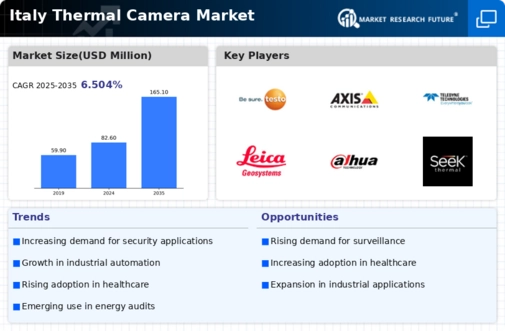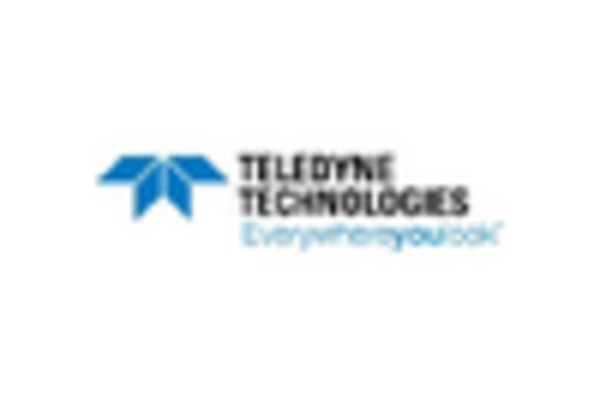Expansion of Healthcare Applications
The thermal camera market in Italy is witnessing an expansion in healthcare applications, particularly in the fields of diagnostics and patient monitoring. Thermal imaging technology is being increasingly employed for non-invasive assessments, such as detecting fevers and monitoring blood flow. Hospitals and clinics are recognizing the advantages of using thermal cameras for early detection of medical conditions, which may lead to improved patient outcomes. The healthcare sector is projected to contribute approximately 20% to the thermal camera market by 2026. This growth is likely fueled by advancements in thermal imaging technology, which enhance image resolution and accuracy, making it a valuable tool in medical diagnostics. As healthcare providers continue to prioritize patient safety and efficient monitoring, the demand for thermal cameras is expected to rise.
Growing Awareness of Energy Efficiency
In Italy, there is a growing awareness regarding energy efficiency and sustainability, which is significantly influencing the thermal camera market. As businesses and homeowners seek to reduce energy consumption, thermal cameras are increasingly utilized for building inspections and energy audits. These devices help identify heat loss, insulation deficiencies, and air leaks, enabling targeted improvements. The Italian government has been promoting energy efficiency initiatives, which may lead to an increase in the adoption of thermal imaging technology. It is estimated that the residential sector could represent around 25% of the thermal camera market by 2026, as more individuals recognize the benefits of energy-efficient solutions. This trend not only supports environmental goals but also offers potential cost savings for consumers.
Increased Focus on Safety and Security
Safety and security concerns are driving the thermal camera market in Italy, particularly in sectors such as law enforcement, border control, and critical infrastructure protection. The ability of thermal cameras to operate in low-light conditions and detect intrusions has made them an essential tool for security personnel. As crime rates fluctuate and the need for enhanced surveillance grows, investments in thermal imaging technology are likely to increase. It is estimated that the security sector could account for around 30% of the thermal camera market by 2026. Furthermore, the integration of thermal cameras with advanced analytics and AI technologies may enhance their effectiveness, providing real-time insights and improving response times in security operations.
Rising Demand in Industrial Applications
The thermal camera market in Italy is experiencing a notable surge in demand, particularly within industrial sectors. Industries such as manufacturing, energy, and construction are increasingly adopting thermal imaging technology for predictive maintenance and quality control. This trend is driven by the need for enhanced operational efficiency and reduced downtime. According to recent data, the industrial segment is projected to account for approximately 35% of the overall thermal camera market by 2026. The ability of thermal cameras to detect heat anomalies and prevent equipment failures is becoming indispensable, thereby propelling growth in the thermal camera market. Furthermore, the integration of thermal imaging with IoT technologies is likely to enhance data collection and analysis, further solidifying its role in industrial applications.
Technological Innovations and Product Development
Technological innovations are playing a pivotal role in shaping the thermal camera market in Italy. Manufacturers are continuously developing advanced thermal imaging solutions that offer improved resolution, portability, and user-friendly interfaces. The introduction of compact and lightweight thermal cameras is making them more accessible for various applications, from industrial inspections to personal use. Additionally, the integration of thermal cameras with mobile devices and cloud-based platforms is enhancing their functionality and data sharing capabilities. This trend is likely to attract a broader customer base, potentially increasing market penetration. It is anticipated that the thermal camera market will see a compound annual growth rate (CAGR) of approximately 10% over the next few years, driven by these technological advancements.
















Leave a Comment